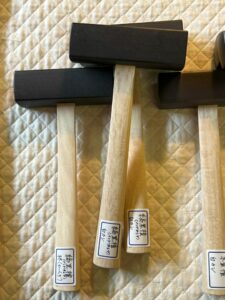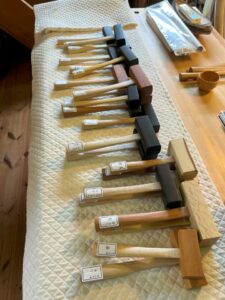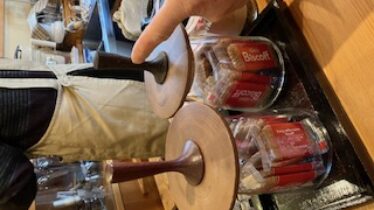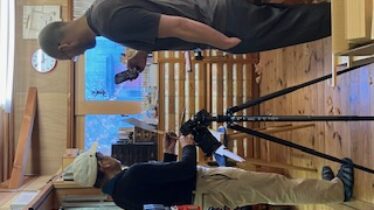New Year’s Work (wooden hammer)
I have always used a hammer to adjust my planer. I have always used a hammer to adjust the planer blade, but when I saw a blacksmith’s approach to planing with great care, I understood the insistence of many craftsmen that they use a wooden hammer instead of a hammer to avoid damaging the planer blade.
A carpenter once told me that a man who smashes the head of a plane blade by hitting it with a hammer cannot do beautiful work, but I have my doubts about this. I have my doubts about this, because the deformed shape left by long hammering is a trace of trial and error left by the user, and I think it is beautiful. It is said that one can tell the skill of a craftsman by looking at his tools, but I think it is narrow-minded to think that a plane blade with no deformation is beautiful, while one that has been used and deformed is ugly, and to use that as an analogy for the nature of the work. Because beauty is diverse.
With this in mind, however, I made an original wooden mallet over the year-end and New Year holidays. I used a dense and heavy species of wood, and made the striking surface curved, while the other side was angled and flat for those who strike the backing. For the handle, we used lightweight material and cut it thin and thin to facilitate the transmission of striking force. Thus, about 10 kinds of hard wood were selected, the shape of the mallet and the length of the handle were considered, and 25 wooden hammers of various sizes were made.
Products are available at BY HAND Gallery and Inoue Tool shop in Tokyo.




